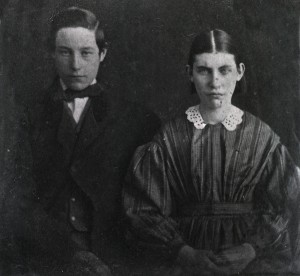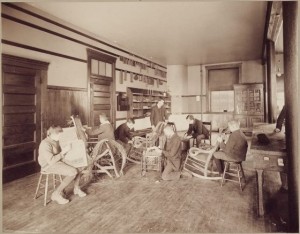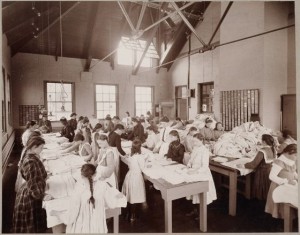
Inmates at the Imbecile Asylum, Burlington NJ, circa 1886, courtesy National Library of Medicine, Image A019401
Men and women who were not insane could be labeled as such when authorities viewed their actions through inappropriate cultural filters that did not allow for deviations in behavior due to a non-Anglo upbringing. (See last two posts.) Immigrants and Native Americans were particularly vulnerable to this type of misdiagnosis, but the medical community’s enthusiasm for labeling put many other people at risk for possible imprisonment. People who seemed “slow” or had different ways of learning also risked labeling; feeble-minded, moron, or idiot were common terms for those who seemed to lack intelligence.
Society often wanted to segregate people they considered of lesser intelligence from the mainstream. Many people feared that those with lesser intelligence would pass on that undesirable trait to their children if they were allowed to marry “normal” partners. Some people feared that the unscrupulous would prey on these weaker members of society unless they were in an institution and under the care of its staff. Most states set aside special homes for citizens they deemed unable to care for themselves due to a lack of intelligence. Unlike insanity, most authorities did not consider it possible to recover from feeble-mindedness or idiocy. Dismissal to a home designed to care for minds of lesser ability was usually a true life sentence.
______________________________________________________________________________________

